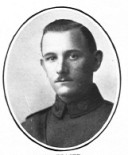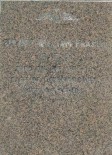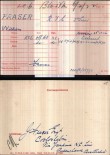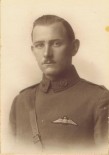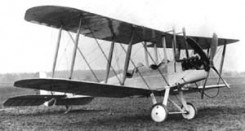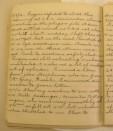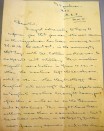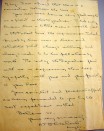FRASER William
-
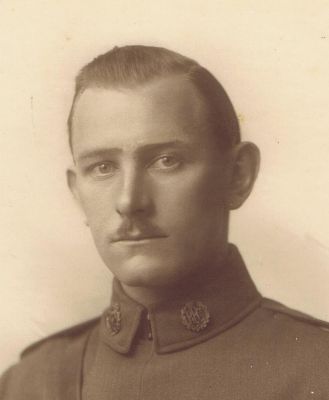
- Royal Flying Corps UK
- 2nd Lieutenant
- 7th Squadron, Royal Flying Corps, British Army
- Yandina
- Yes
-
William Fraser was the eldest of three sons of John and Janet Fraser (nee Grigor), the first European settlers in Cooloolabin near Yandina. Raised on the family farm, he moved to Brisbane as a young man where he gained employment with G & J Dowrie, engineers, boilermakers, blacksmiths, iron and brass founders and machinery merchants of South Brisbane. Will became a member of the Queensland Aero Club in when it was formed in June 1910.
When the Queensland Volunteer Flying Civilians was formed in Brisbane in November 1914 by Major Thomas McLeod and Lieutenant Valdemar Rendle, William was one of seven young cadets who trained for aerial warfare with McLeod and Rendle at weekends in a reconstructed pre-war Caudron aircraft at the Hemmant aerodrome. No doubt his experience as an engineer at the Dowrie Foundry would have played a large part in his love of flying machines. The important role he played in the reconstruction of the Caudron has been recorded in his diary dated 1 April 1915 to 14 March 1916.
On 30 Dec 1915, the group of nine pilots sailed for England on the TSS Moeraki to join the Royal Flying Corps. They spent long hours in further training with the RFC, sometimes starting at 4.30am and often finishing at 8.30pm. They had to attend at the hangars or workshops, had lectures twice a day, taking notes and writing them up afterwards. They were taught to fly a number of different types of machines. On 6 April 1916, William received a letter from the War Office advising of his appointment as 2nd Lieutenant. He left for France on 18 August 1916, serving with No. 7 Squadron which was equipped with B.E.2s for both bombing and reconnaissance during the Battle of the Somme that year. This battle is notable for the importance of air power and the first use of the tank.
William found himself engaged in the Battle of the Ancre Heights which was fought to take the area east of Gommecourt. His diary describes the difficulties encountered because of winds, cloud, mist and faulty aircraft. During the days leading up to the Battle of the Ancre Heights, several attempts to capture the Regina Trench were hampered by the weather. On 24th September, he wrote:
Did a 2 hrs 40 mins flight with Collen obs shoot unsuccessful owing to thick mist obscuring the view of the ground. Flew back to the aerodrome & made two unsuccessful attempts to land, mist was two hundred feet thick & very dense on & near the ground…… On the first day of the Battle of the Ancre Heights, William wrote:
1 October. Successful Tr.Rg with Lt Collen 1 hr 50 mins on Lt Percival machine B.E.2.D. 5874 Two weeks later, their luck changed and Lieutenants Fraser and Collen found themselves the subject of enemy fire.
16/10/16 3 hrs 5 mins. on 5831.20 Lt Collen, obs. We were attacked from above & behind by two hun Roland biplanes, there was one machine attacking from the right side slightly behind & above, the other machine was immediately above & behind, he put a bullet through our centre section, two bullets through the cowling of our engine, one through the left (port) breather on engine & several through the planes especially the right plane near the centre section, one bullet striking the near the rear right main spar just near the fore section the machine at the side (apparently) put a bullet through the propeller about 9 inches from the end of the blade cut one of the bracing wires to the engine, put two bullets through outside leading port strut & one through rear strut same side, he cut two sets of flying wires the outside leading port, & the outside rear starboard, also a few shots through the fuselage near my seat, there were marks of 40 bullets in the machine, the side machine put a bullet through the observer’ gun & drum of ammunition while he was firing, jamming it, also making it impossible to take drum off, he had fired thirty shots at the machine above us, before drum was hit, the top machine turned & left us, the one on the right following him, I bought machine back and landed safely in the aerodrome neither the observer or myself were hit, though the machine had been peppered all around us. The huns at the closest was about 30 feet away.
William’s machine was brought down behind enemy lines on 25th October 1916 in Gommecourt, France. He died of wounds received. His sacrifice is commemorated at the Arras Memorial, Arras, Pas de Calais, France as well as in his home town of Yandina and Cooloolabin.Additional Information:
FRASER, WILLIAM
2nd Lieutenant, 7 Squad. Royal Flying Corps.
b. 04.08.1889 Croudace, Newcastle, NSW.
Enlisted: 1915 WW1.
d. 25.10.1916 East of Commecourt, France.
Next of Kin: John Fraser – Father.Arras Memorial, Arras, Nord Pas de Calais France
William Fraser was the eldest of the three sons of John Fraser and Janet Grigor of Cooloolabin. He moved to Brisbane as a young man and found work with South Brisbane merchants, G.& J.Dowrie, engineers, boilermakers, blacksmiths, iron and brass founders.
Will became a member of the Queensland Aero Club when it was formed in June 1910 and when the Queensland Volunteer Flying Civilians was formed in Brisbane in November 1914 by Major Thomas McLeod and Lieutenant Valdemar Rendle, William was one of seven young cadets who trained on weekends for aerial warfare.
No doubt his experience as an engineer at the Dowrie Foundry would have played a large part in his love of flying machines. The important role he played in the reconstruction of the Caudron has been recorded in his diary dated 1 April 1915 to 14 March 1916. When the war broke out in Europe, William Fraser left Brisbane for England 30 December 1915 on TSS Moeraki with a group of 8 other pilots to join the British Royal Flying Corps. They spent long hours in training with the RFC, sometimes starting at 4.30am and often finishing at 8.30pm with workshops, lectures and training to fly a number of different types of aeroplanes.
On 6 April 1916, William received a letter from the War Office advising of his appointment as 2nd Lieutenant. He left for France on 18 August 1916 to fly missions over the Somme. William’s plane was brought down behind enemy lines on 25 October 1916 in Gommecourt, France and he died of wounds received in the crash – the first of John and Janet Frasers’ sons to be killed at war.
William Fraser’s name has been remembered on the Arras Memorial at Nord Pas de Calais as well as on Memorial Plaques in the Cooloolabin Hall, Cooloolabin; Yandina and District War Memorial, Stevens St, Yandina and Maroochy Shire War Dead, Quota Park, Matthew Street, Nambour.Source: Commonwealth War Graves Commission; Adopt-a-Digger; Australian War Memorial; Queensland Registry of Births, Deaths and Marriages; Nambour Chronicle 2 September 1904 p5; 22 September 1916; 14 February 1919 p2; 2 & 9 May 1919 p7.
From the Genealogy Sunshine Coast publication
“AND THEIR NAMES SHALL LIVE FOREVER…”
REMEMBERING MILITARY PERSONNEL IN THE OLD MAROOCHY SHIRE CEMETERIES – BOOK 2, THE SMALL CEMETERIES (DIDDILLIBAH, EUMUNDI, GHEERULLA, MAPLETON, OLD NAMBOUR, YANDINA) - Gommecourt
-
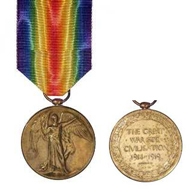
-
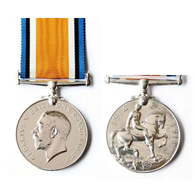
- Died from wounds
- Did not return
- 25 October 1916
- Gommecourt, France
-
Memorial Plaque, Cooloolabin Hall, Cooloolabin
Yandina and District War Memorial, Stevens St, Yandina
Maroochy Shire War Dead, Quota Park, Matthew Street, Nambour
Arras Memorial, France
Headstone in Yandina General Cemetery, Qld.
-
- With Our Boys (1875 x 2628).jpg Hits: 345 Size: 817 Kb
- Dianne

